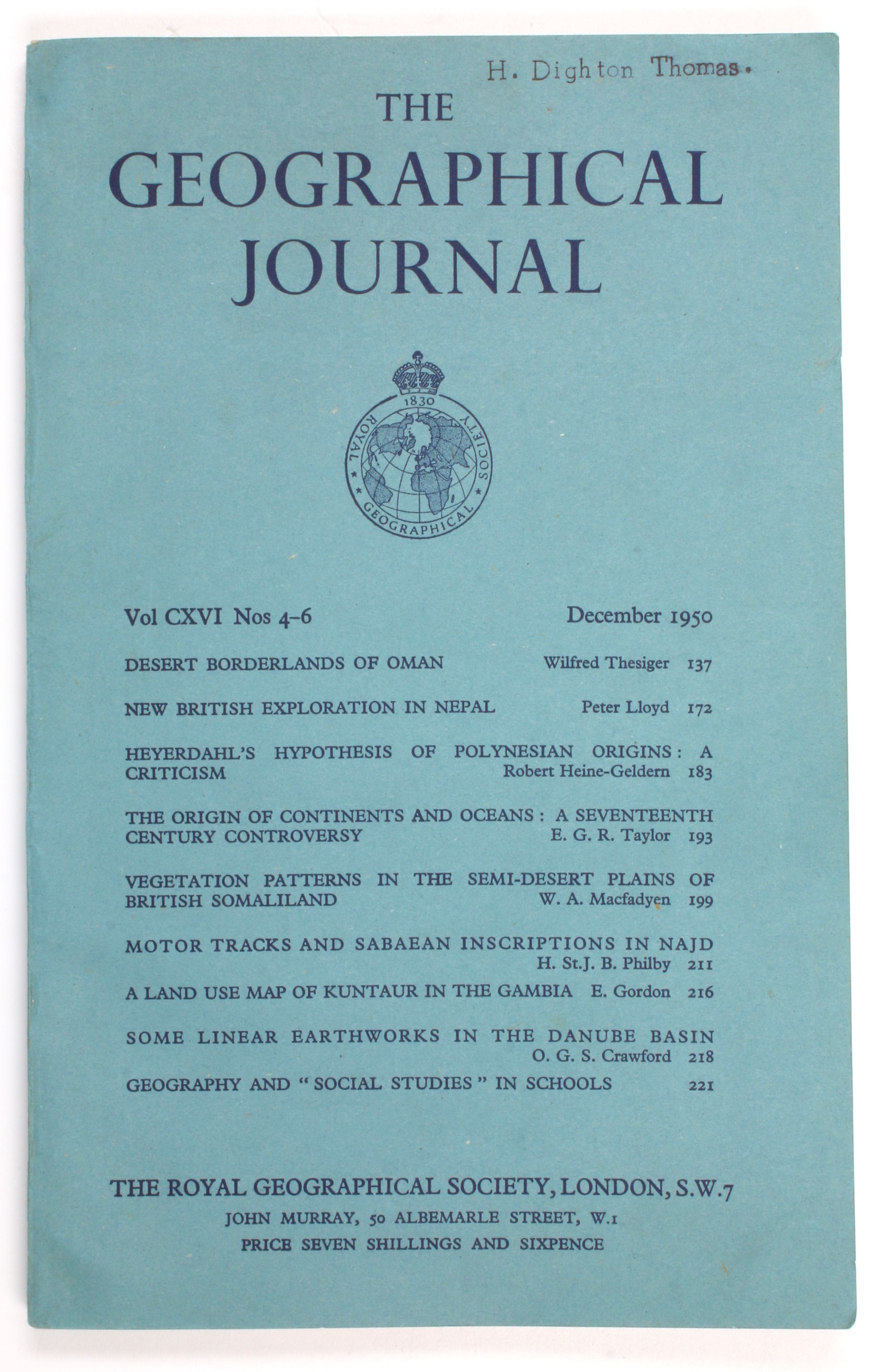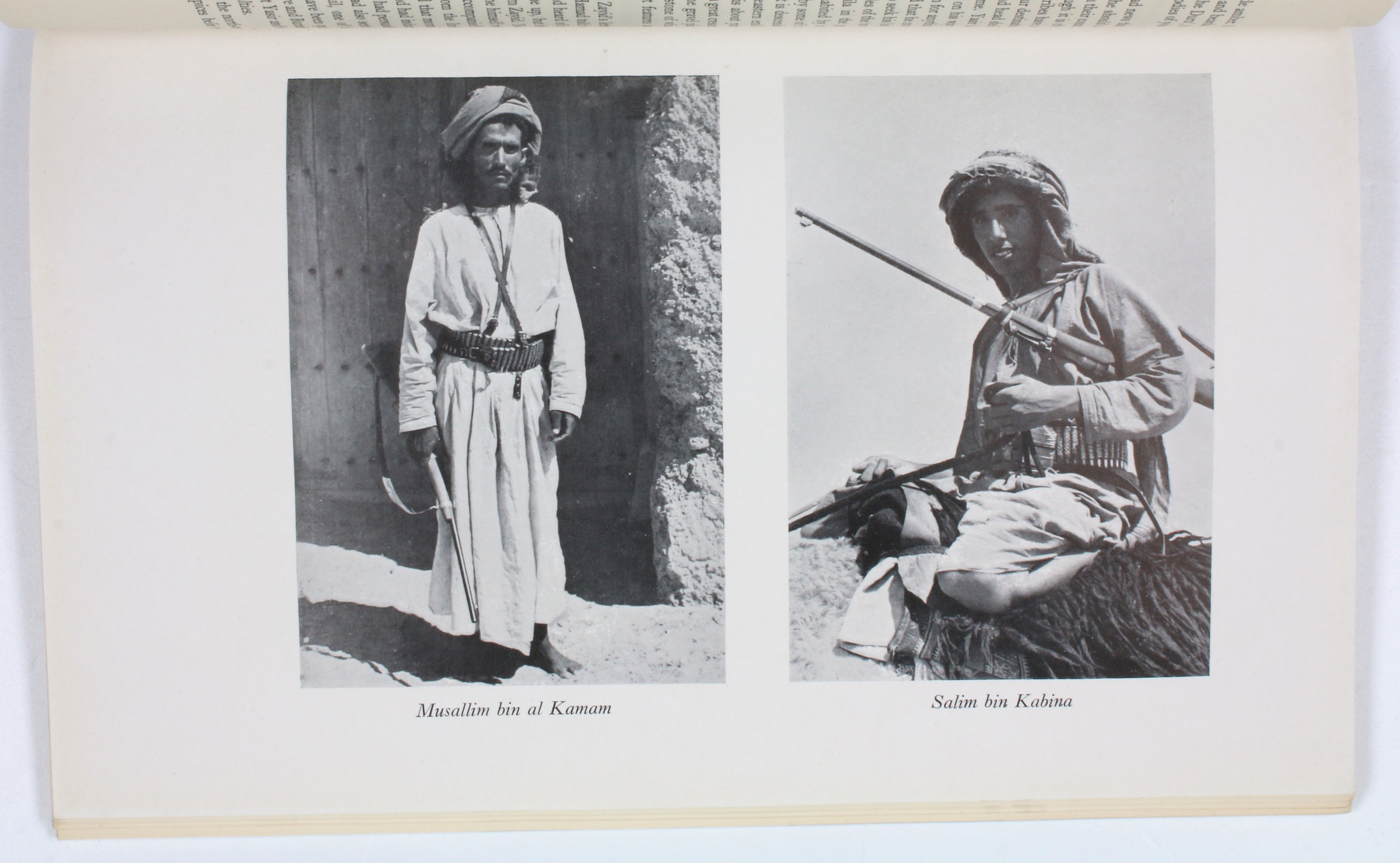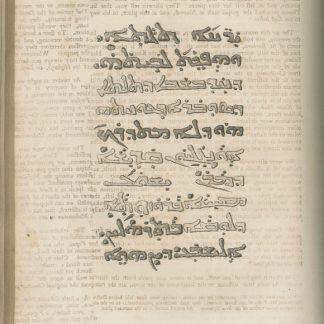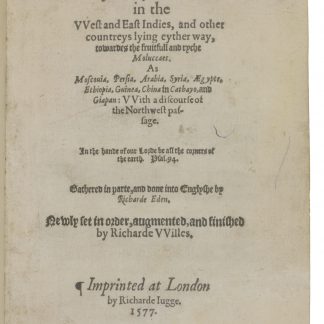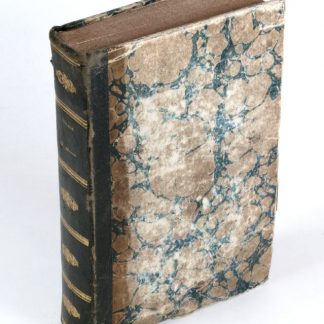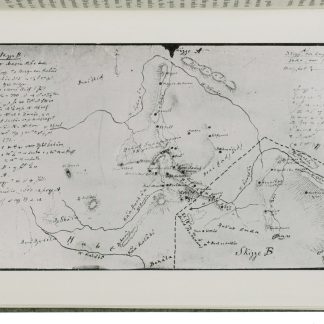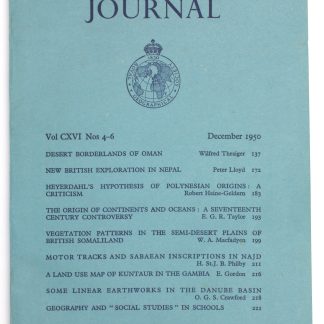A discovery of inscriptions in Najd
Motor Tracks and Sabaean Inscriptions in Najd. (In: The Geographical Journal Vol. CXVI Nos 4-6. December 1950).
8vo. 211-215 pp. [entire volume: x, 137-262, (6) pp., with 28 photographic illustrations, numerous sketch maps in the text, and two maps on a folding plate]. Original blue printed wrappers.
€ 1.500,00
First edition. An overview of the author's exploration of the geographical heartland of Saudi Arabia, after a tip from King Abdulaziz's brother, Abdullah bin Abdul Rahman Al Saud (1893-1976), that Sabaean inscriptions had been found there. Includes an in-text map of the area and its motor routes.
St John Philby (1885-1960), also known by his Arabian name "Sheikh Abdullah", was an Arabist, explorer, writer, and British colonial office intelligence officer. Educated at Trinity College, Cambridge, he studied languages and was a friend and classmate of Jawaharlal Nehru, later prime Minister of India. Philby settled in Jeddah and became famous as an international writer and explorer. He personally mapped on camelback what is now the Saudi-Yemeni border on the Rub' al Khali; in 1932, while searching for the lost city of Ubar, he was the first Westerner to visit and describe the Wabar craters. At this time, Philby also became Ibn Saud's chief adviser in dealing with the British Empire and Western powers. He converted to Islam in 1930. The personal contacts between the United States and Saudi Arabia were largely channeled through the person of Philby.
Includes, on pp. 137-171, Wilfred Thesiger's important account of the "Desert Borderlands of Oman", which forms the nucleus of his classic travelogue, "Arabian Sands" (1959). The author's highly regarded photographs show the desert of the Empty Quarter, a settlement at Liwa, sand vegetation after heavy rain, a falconer mounted on a camel, a peregrine falcon with a caught hare, peregrine falcons on the blocks, Sheikh Wahiba of Yahahif and a young Wahiba girl, a thoroughbred Batina camel, the Farai well in Wahib country, portraits of Musallim bin al-Kamam and Salim bin Kabina, and a view of Jabal Kaur from the wadi Saifam.
A good copy with the ownership stamp of Henry Dighton Thomas (1900-66), a Cambridge geologist who spent part of his career at London's prestigious Natural History Museum.
Not in Macro.

